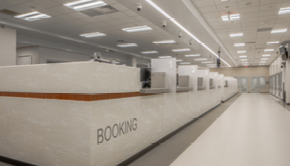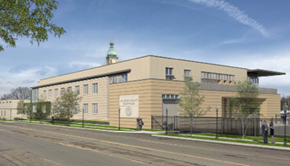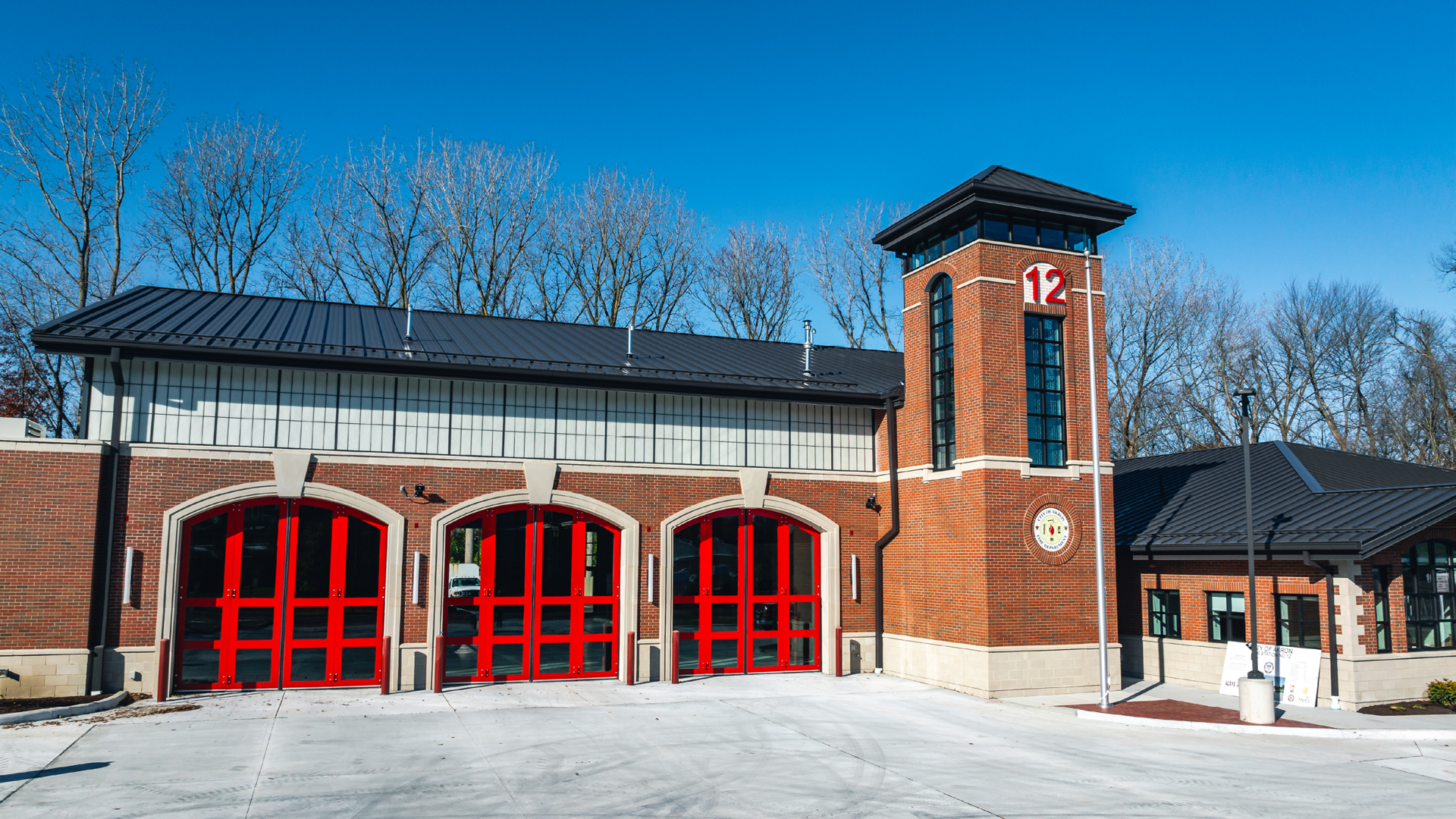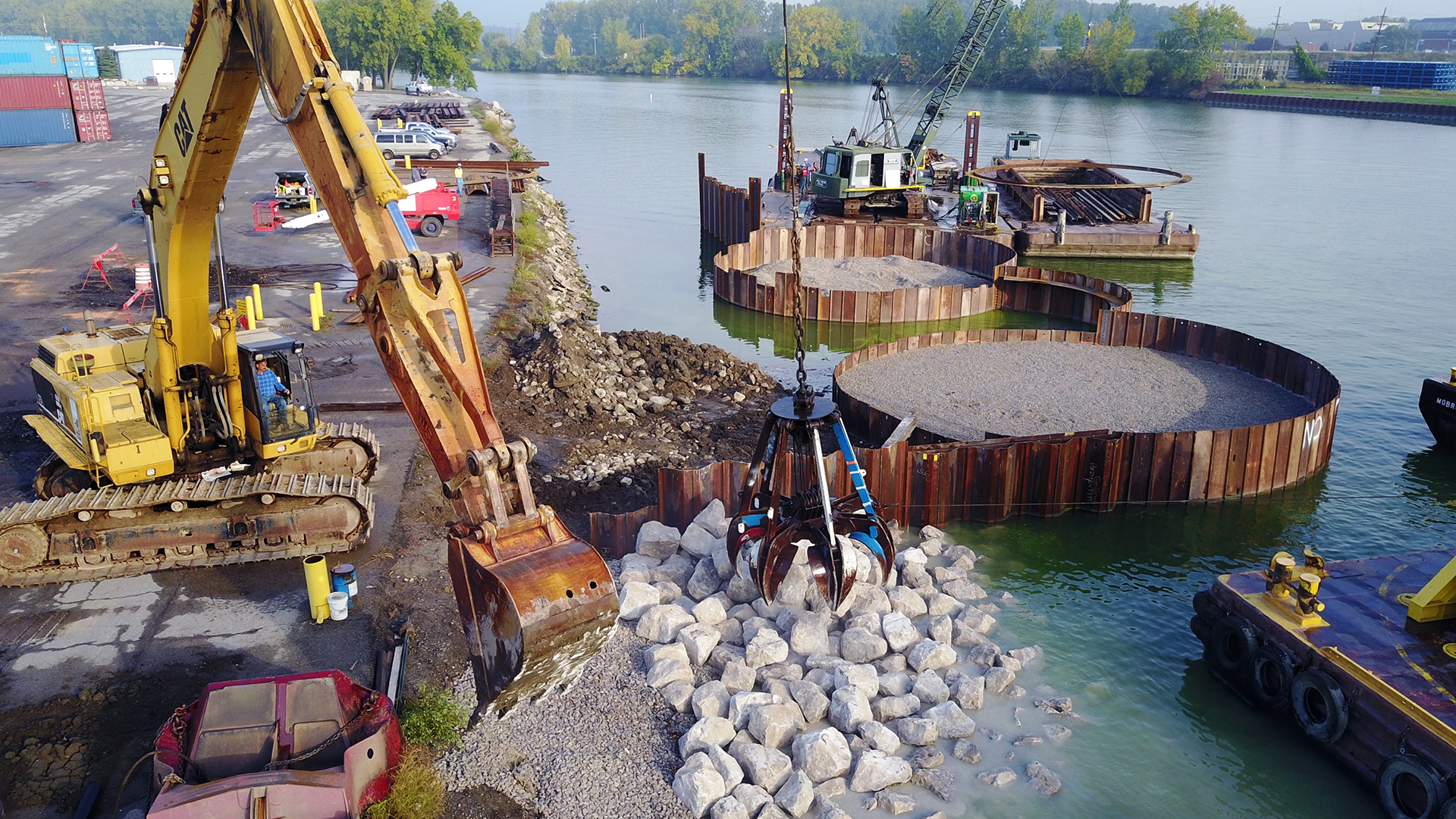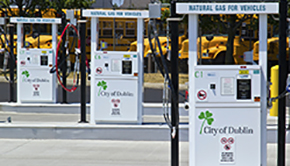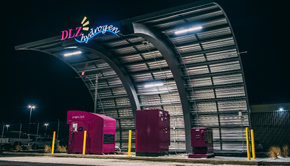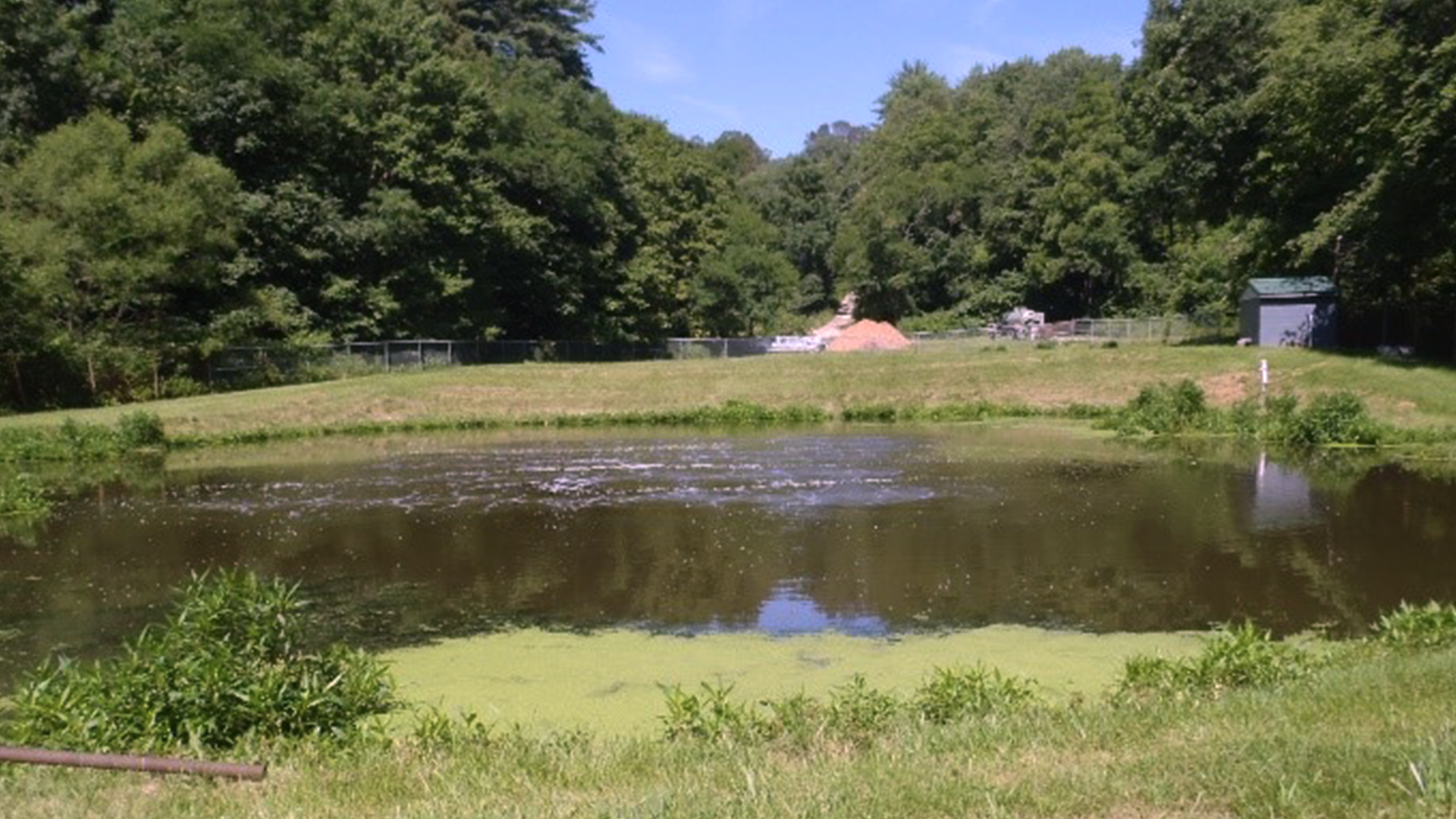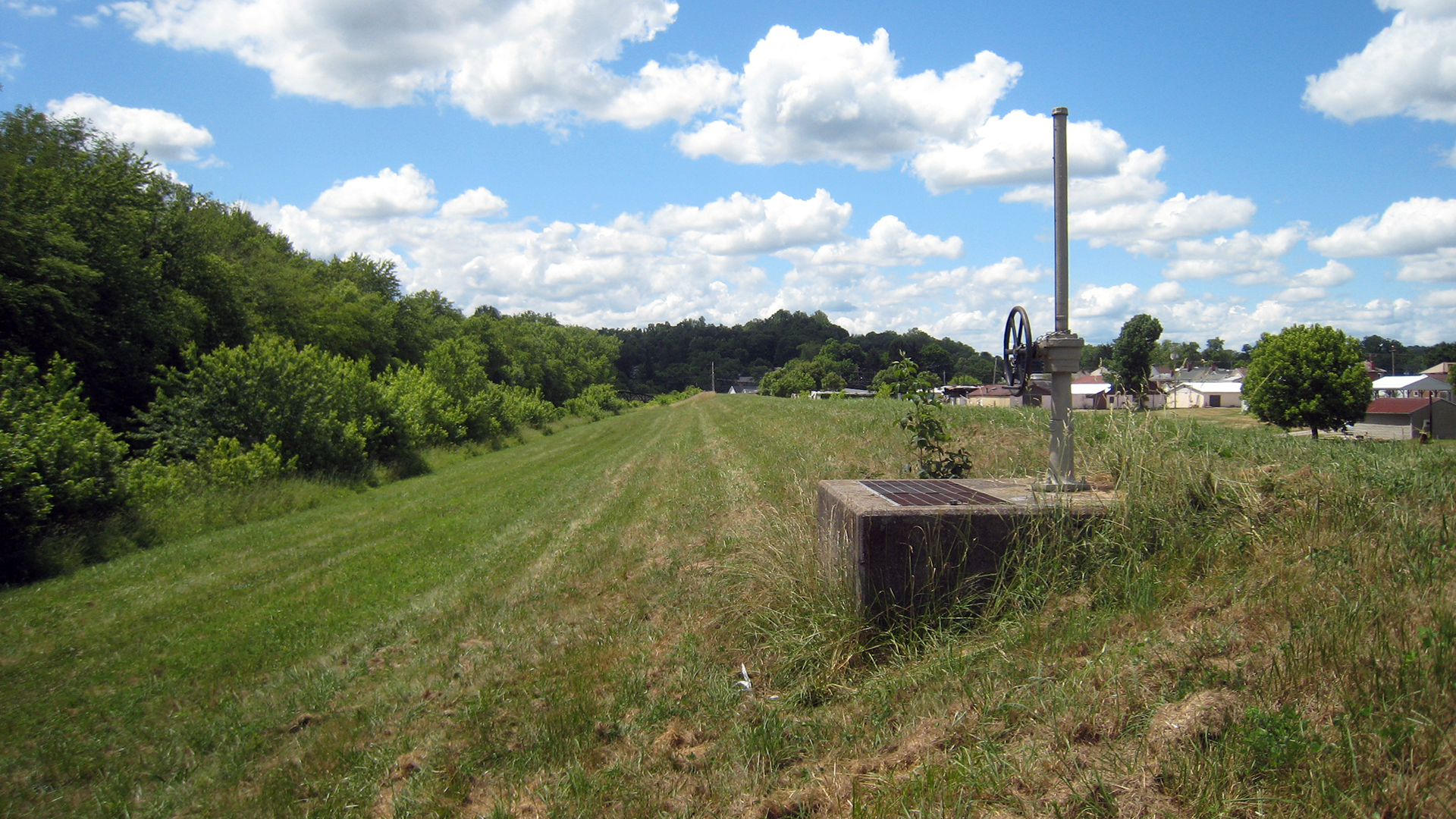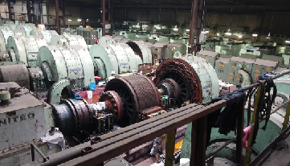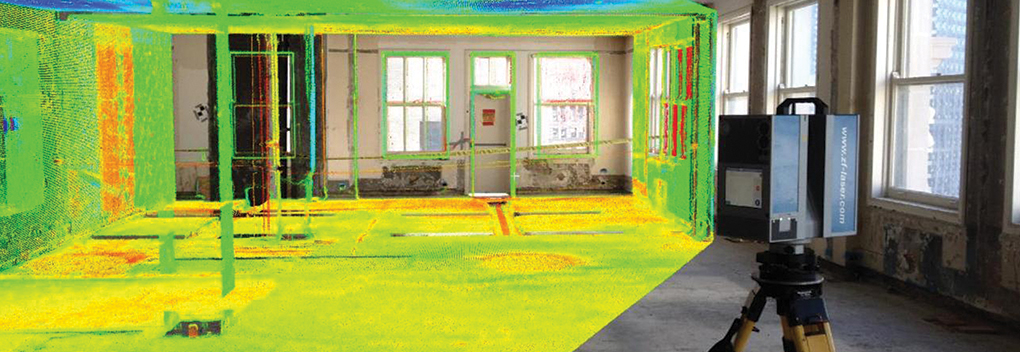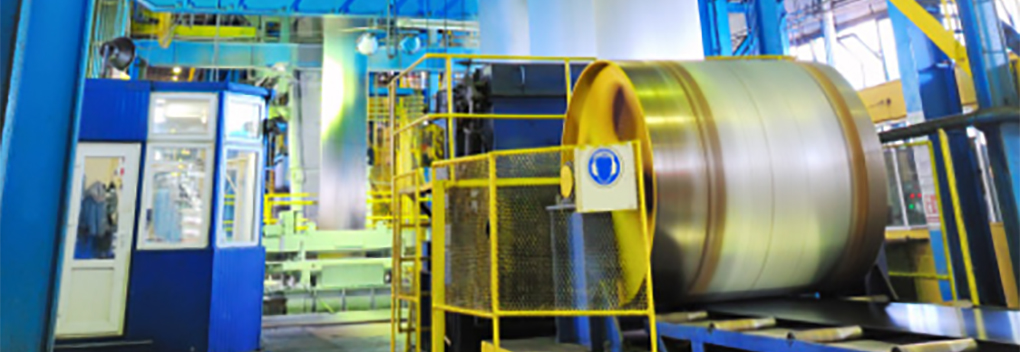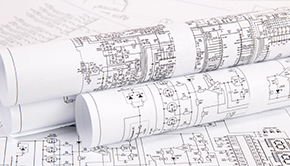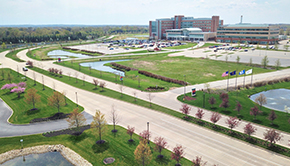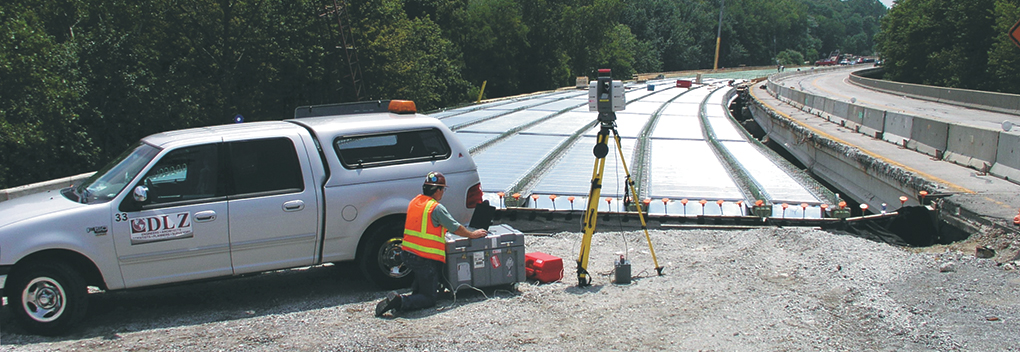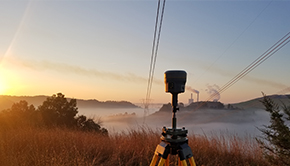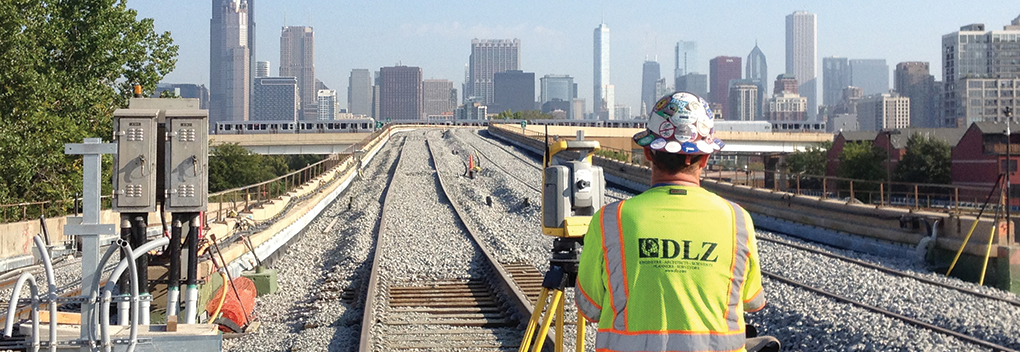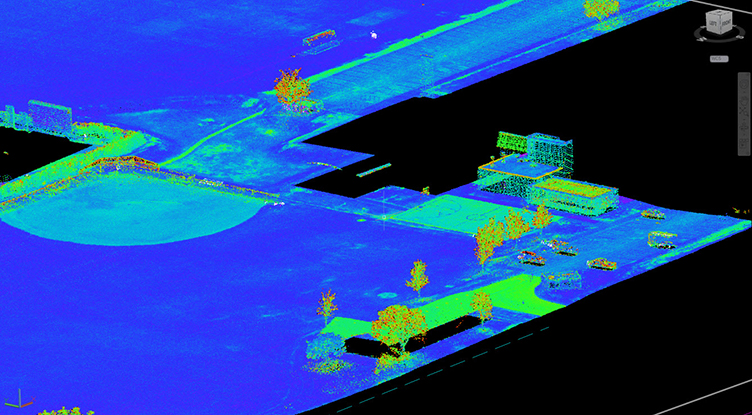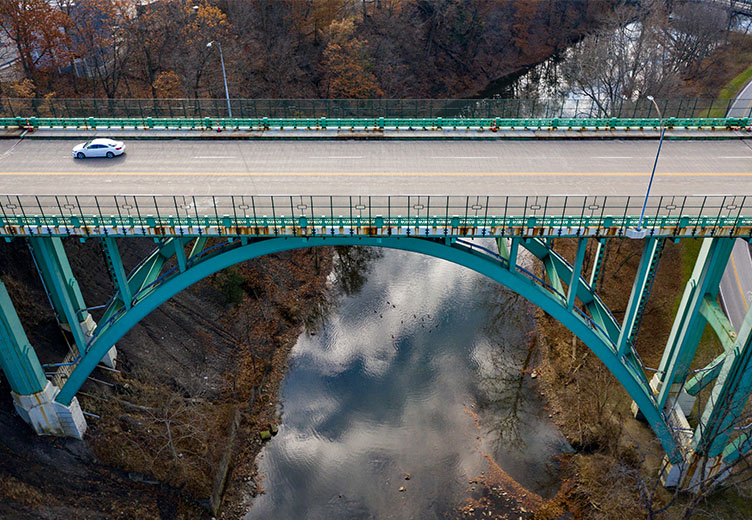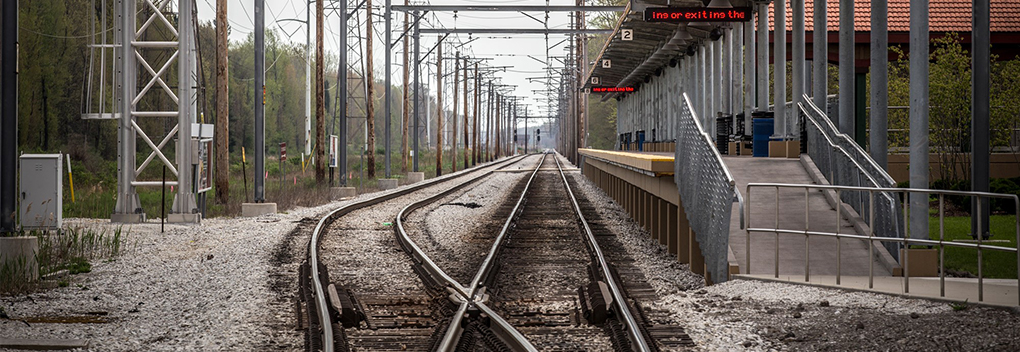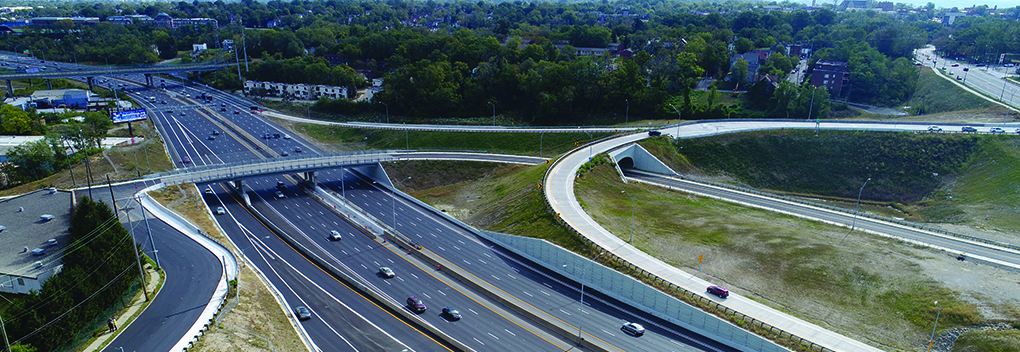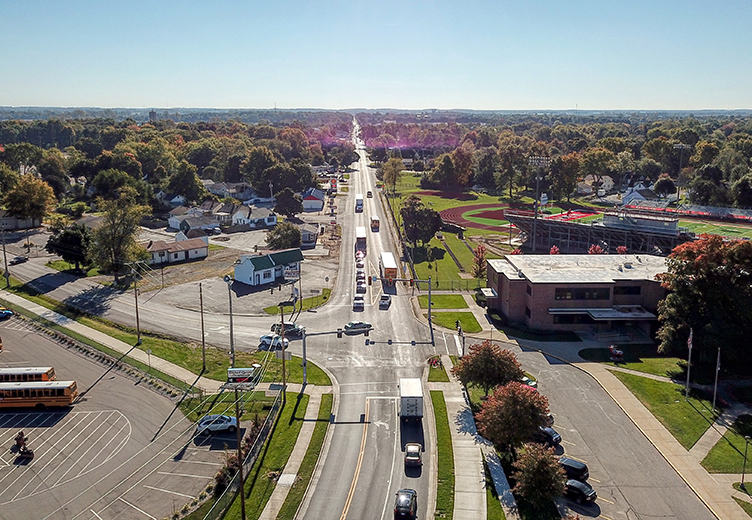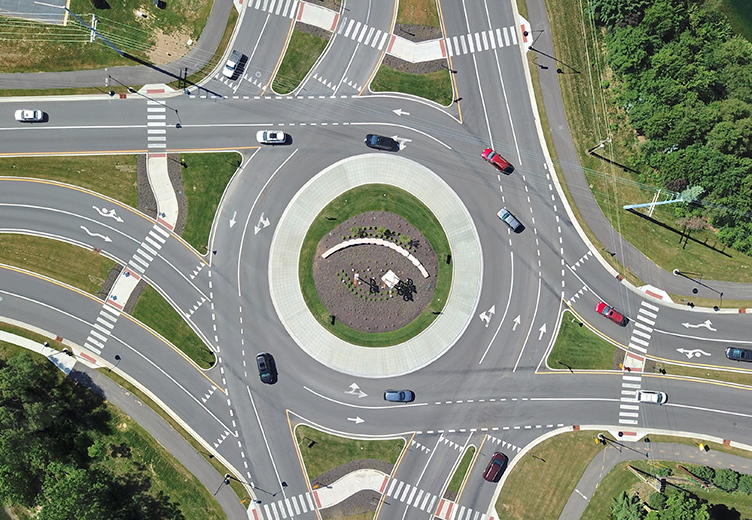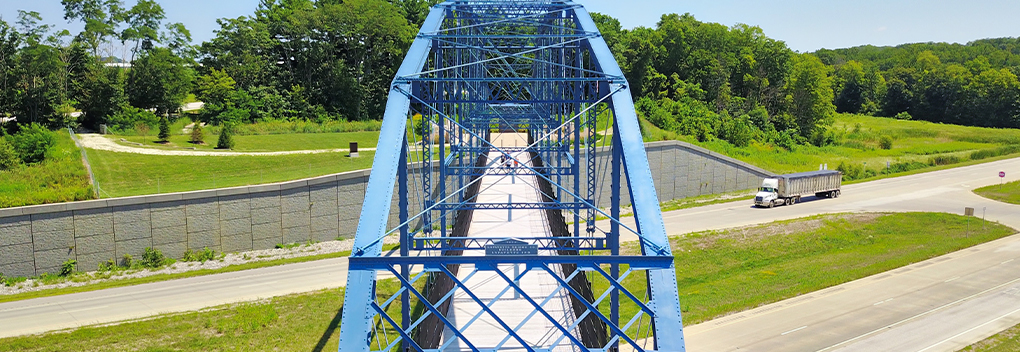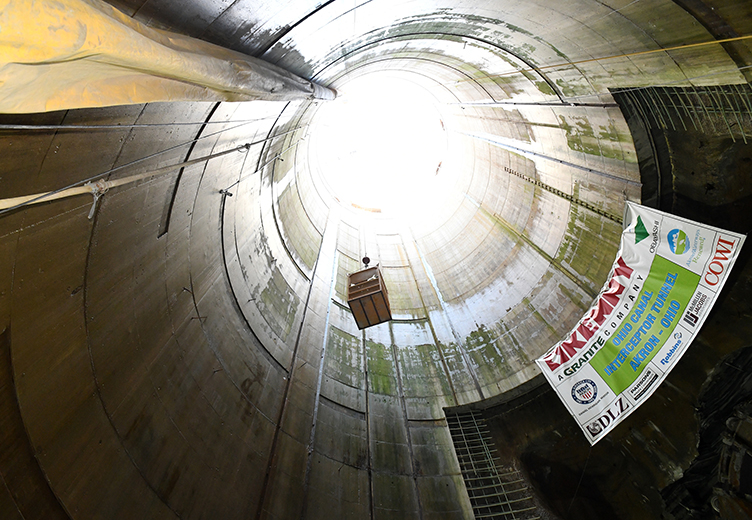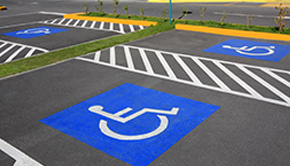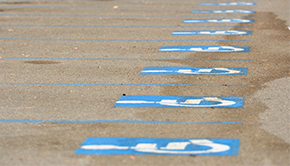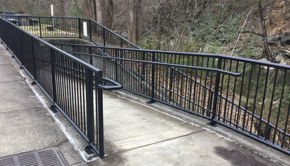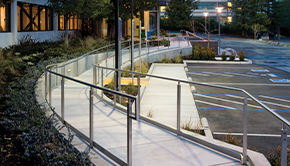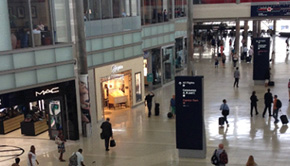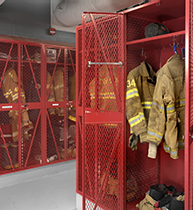DLZ has had the opportunity to assist fire departments throughout the Midwest with fire station renovation and new construction design. Fire stations are more than the firefighters’ place of work, the facilities are the firefighters’ home away from home. There are many aspects to firehouse design, however the topic of promoting firefighter health is at the forefront of today’s discussions.
DLZ ’s architects and engineers incorporate a variety of design components to reduce potential health risks within the station. Firehouse configurations and spatial adjacencies not only meet functional operational needs but also establish “hot zones” which are separated from firefighter living zones. Decontamination areas, gear washing and drying zones and gear storage areas are located immediately off the apparatus floor area to contain potential exposure to the living spaces.
Ventilation systems are selected with careful attention to fresh air and exhaust air levels. The following measures are put in place to reduce the potential air-borne contaminants: direct capture ventilation systems are utilized for the vehicle exhaust systems within the apparatus bays; properly ventilated gear lockers and storage areas; and positive building pressure within the living areas is established to reduce air infiltration from the “hot zones.”
One of the more recent amenities within firehouses are firefighter saunas. Studies have shown sweating is very effective in removing toxins from the body. As a result, the use of saunas has become more common within today’s firehouses. When utilized with low cardio activities, toxins, including heavy metals and lead, which may enter the blood stream during fire calls, are flushed and removed.
DLZ appreciates firefighters and the call to serve our communities. As a reminder, Fire Prevention Week is October 8-14, 2017. This year’s Fire Prevention Week theme, “Every Second Counts: Plan 2 Ways Out!” works to better educate the public about the critical importance of developing a home escape plan and practicing it.
In support of Fire Prevention Week, DLZ encourages all households to develop a plan together and practice it. A home escape plan includes working smoke alarms on every level of the home, in every bedroom, and near all sleeping areas. It also includes two ways out of every room, usually a door and a window, with a clear path to an outside meeting place (like a tree, light pole, or mailbox) that’s a safe distance from the home.



